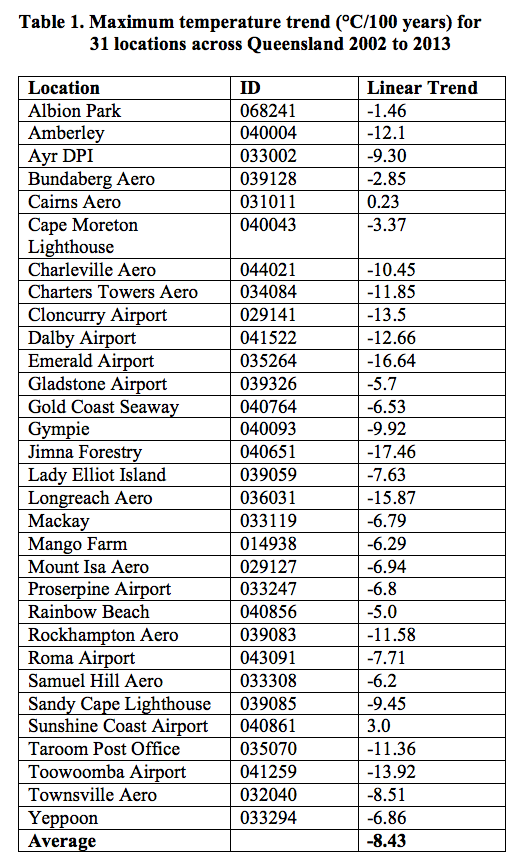ON 10th June 2014 I sent the Hon Greg Hunt MP, Minister for the Environment, an email suggesting that a cooling temperature trend was establishing across northeastern Australia.
I recently received a reply from the Bureau with a covering letter from Senator Simon Birmingham, in response to this email and also my letter of 4th March. I will reply in due course.
Interestingly on the sixth page of this document, the Bureau both makes the point that 2013 was the hottest year on record for Queensland, while conceding that the period 2002-2013 shows short-term cooling.
This potential tangling of trends is not acknowledged, let alone reconciled in the document from the Bureau.
According to the Bureau the cooling is consistent with increases in monsoonal rainfall. But I thought there was drought over much of this period, that is from 2002-2013?
At the top of the next page (scroll to page 7), the Bureau points out that over time periods sufficiently long for ENSO-related variability to be smoothed out, there is a clear and sustained warming signal from the 1950s onwards.
I don’t think I ever disputed that the late 20th Century experienced warming, but the point that seems to be lost on the Bureau is that a cooling trend may have since set-in. Indeed, Table 1 (reproduced from my email to the Minister of 10th June) suggests quite dramatic cooling.
Of course in my email of 10th June I explained why this cooling is irreconcilable with the claims in the State of the Climate Report 2014 of record warming. It comes down to the apparent recent record warm years being a consequence of the two-step homogenisation process providing a revisionist approach to ensure the official temperature statistics are politically correct.


 Jennifer Marohasy BSc PhD has worked in industry and government. She is currently researching a novel technique for long-range weather forecasting funded by the B. Macfie Family Foundation.
Jennifer Marohasy BSc PhD has worked in industry and government. She is currently researching a novel technique for long-range weather forecasting funded by the B. Macfie Family Foundation.